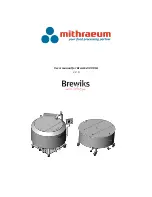
Fig.18 - Abb.18
Fig.19 - Abb.19
Fig.20 - Abb.20
Fig.21 - Abb.21
RISCHI DIRETTI ALLE PERSONE
In questo paragrafo verranno illustrati i rischi che operatore, manutento-
re e chi si trova nell’area di lavoro del sollevatore, possono correre a
causa di un uso non corretto del sollevatore stesso.
RISCHIO DI SCHIACCIAMENTO DELL’OPERATORE
dovuto ad una errata posizione dell’operatore addetto al quadro coman-
di.
Durante la fase di discesa delle pedane e del veicolo l’operatore non
deve mai portarsi sotto le parti mobili in fase di discesa ma operare sol-
tanto dalla zona comando (fig.18).
RISCHIO DI SCHIACCIAMENTO DEL PERSONALE IN GENERE
Durante la fase di discesa del sollevatore e del veicolo il personale non
deve sostare in zone interessate dalle traiettorie di discesa (fig.19). L’o-
peratore deve manovrare solo dopo essersi accertato che nessuna per-
sona sia in posizioni pericolose.
RISCHIO DI URTO
Dovuto alle parti del sollevatore o del veicolo posizionate ad altezza
d’uomo.
Quando, per ragioni di lavoro, il sollevatore viene fermato a quote relati-
vamente basse (inferiori a 1,75 m dal suolo) vi è il rischio di urtare con-
tro le parti non evidenziate da particolari colorazioni (Fig.20).
RISCHIO DI SPOSTAMENTO DEL VEICOLO
Dovuto ad operazioni da compiere e che generano spinte sul veicolo
(fig.21).
Se il veicolo é di dimensioni o pesi ragguardevoli uno spostamento può
rappresentare una situazione di sovraccarico o sbilanciamento non pre-
visto pertanto evitare in maniera assoluta tali manovre.
RISKS TO PERSONS
This paragraph illustrates risks to which the operator, maintenance wor-
ker or any person near the operating area of the lift may be exposed in
the case of improper use of equipment.
RISK OF CRUSHING (OPERATOR)
Possible if the operator controlling the lift is not in the specified position
at the command panel. When the platforms and vehicle are descen-
ding, the operator must never be partly or completely underneath the
moving structure. During this phase the operator must remain in the
command zone (fig.18).
RISK OF CRUSHING (PERSONNEL)
When the platforms and vehicle are descending personnel are prohibi-
ted from entering the area beneath the moving parts of the lift (fig.19).
The lift operator must not start the manoeuvre until it has been clearly
established that there are no persons in potentially dangerous posi-
tions.
RISK OF IMPACT
Caused by parts of the lift or the vehicle that are positioned at head he-
ight.
When, due to operational reasons, the lift is immobilised at relatively
low elevations (less than 1.75 m from the ground) personnel must be
careful to avoid impact with parts of the machine not marked with spe-
cial hazard colouring (Fig.20).
RISKS DUE TO VEHICLE MOVEMENT
Movement may be caused during operations which involve force suffi-
cient to move the vehicle (Fig.21).
If the vehicle is of considerable dimensions or weight, movement may
lead to overloading or unbalancing; all measures must be taken to avo-
id such an occurrence.
26
Summary of Contents for 280AZ
Page 2: ......
Page 68: ...COLONNE E BASAMENTO POSTS AND BASE S ULEN GRUNDLAGE COLONNES CH SSIS COLUMNAS BASE...
Page 69: ...CARRELLI E BRACCI CARRIAGES AND ARMS SCHLITTEN UND ARME CHARIOTS ET BRAS CARRETILLAS BRAZOS...
Page 70: ...QUADRO ELETTRICO CONTROL PANEL SCHALTTAFEL DREHSTROM COFFRET LECTRIQUE CUADRO ELECTRICO...
















































